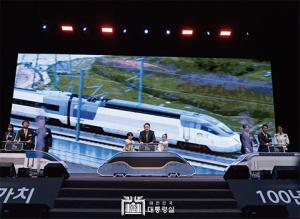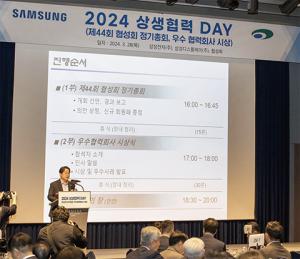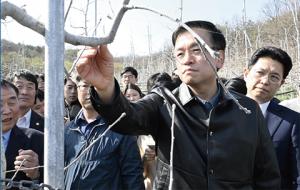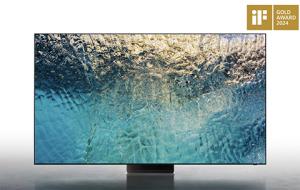 |
The Japanese government began discharging contaminated water from the Fukushima nuclear plant into the ocean at 1 p.m. on Aug. 24. Many people are becoming increasingly concerned about food safety. Local governments and businesses are testing seafood for radiation, and more and more citizens are buying radiation detectors also. Attracting attention, in this atmosphere, is JS Techwin that released Licht RMS-F, a seafood radiation detector.
Radiation detector with high-performance scintillation sensor technology
JS Techwin’s “LICHT” radiation detector uses a high-performance new material scintillator (plastic scintillator) developed in 2013 for fast and accurate measurement times.
The scintillator developed by the company has a high light output and a decay time of nanoseconds, enabling fast radiation detection in less than a second, which is superior to the existing GM counting tube. With this sensor, the time required by existing radiation measurement equipment of 20 to 60 seconds is drastically reduced to less than one second.
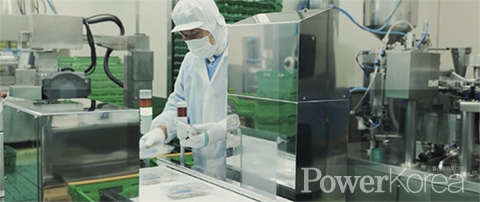 |
Licht RMS-F seafood radiation detector
The Licht RMS-F can quickly and accurately measure the amount of radiation in fish on a conveyor belt. When radioactive fish passes by, the high-performance sensor detects it, triggers an alarm, and displays the radiation level on the monitor and raises a graph.
It is expected to greatly improve the accuracy of the radiation detection test for seafood, which relies on sampling surveys, by enabling full inspection of large quantities of seafood.
“It is not easy to find contaminated fish by sampling when only one in a thousand fish may be contaminated with radioactivity. The Licht conveyor-type radiation detector uses a high-performance scintillation sensor to detect trace amounts of radioactivity accurately and quickly, as fast as one millionth of a second, making it possible to test a large number of fish.” explains JS Techwin CEO Junsuhk Suh.
The Licht RMS-F was recently delivered to the Jagalchi fishery in Busan, which is facing concerns over the discharge of contaminated water from Fukushima, and has been well received.
 |
Portable radiation detector Licht RADE-C
Medical personnel real-time exposure measurement device RRPD
The Licht RADE-C is a high-performance handheld radiation detector that is easily portable and can be used to measure the radioactive contamination of food, objects, etc. The self-contained monitor displays real-time radiation levels and sounds an alarm.
It works with a smartphone app that allows you to view measurements, data history, and more on your smartphone, and is semi-permanent by simply replacing the battery.
Seafood processors, as well as restaurants and distributors who purchase ingredients, can use these radiation detectors to reduce anxiety when purchasing ingredients or serving food in restaurants.
“I saw a restaurant in Busan make a banner and put it at the entrance to reassure customers that they use our radiation detectors to test their fish. With our portable radiation detector, customers can test the food themselves and eat it.” explains Suh.
The Licht RADE-C is currently used by a variety of food service distributors, including distribution centers of Korea’s leading online retailers, fishermen supplying hypermarkets, fishermen’s cooperatives, and restaurants.
 |
Real-time radiation exposure measurement RRPD set
JS Techwin has also launched a set of real-time radiation personal dosimeters (RRPD) for medical personnel who are exposed to a lot of radiation for a long time.
It is a set of four shaped wearable devices and monitors that are used like mandatory TLD badges for medical personnel exposed to radiation. You can wear it on your wrist or put it in your gown pocket like a ballpoint pen to measure radiation exposure in real time, and check the real-time exposure and cumulative amount by body part through the monitor and manage the data. It can be used not only in medical centers, but also in nuclear power plants, military bases, and educational and research institutions where there is a high risk of radiation exposure.
RRPD sets are being delivered to Lopburi cancer hospital and Golden jubilee cancer center in Thailand.
The company is also preparing to develop a small-sized PET (positron emission tomograph) for animals. There are only a few companies in the world that make PET for animals, so the market prospects are good.
During a trade mission to Poland in May, the company received offers from two Polish companies to buy PET for animals.
 |
Entering the Japanese market
JS Techwin will participate in an exhibition in Japan this October and the German medical device exhibition MEDICA in November.
More than 300,000 radiation detectors have been sold in Japan since the Fukushima nuclear disaster. Most of these detectors use GM tubes, which have slow detection speeds and poor performance, and are approaching their replacement cycle.
“We believe that our handheld radiation detector is a semi-permanent product with a fast response time and can be used with a charger, which is competitive enough in Japan.” explains Suh, and adds:
“The discharge of nuclear contaminated water from the ALPS cleanup is not a big problem. But the contamination of the ground cannot be cleaned up. When I visited the Fukushima disaster area last year, there was radiation coming from the car and radiation coming from the ground. Our radiation detector, which is the fastest sensor in the world, was able to measure radiation in a car traveling at 50 kilometers. At a time of growing concern for seafood, our product is the only one that can measure radioactivity in less than a second with a full water test.”
CEO Suh received his B.S. in astrophysics from Seoul National University and his B.S., M.S., and Ph.D. in applied physics and nuclear physics from BONN University in Germany. He is a world-renowned nuclear physicist with more than 260 SCI-ranked papers to his credit, having worked at the Max Planck Institute and the Nuclear Radiation Laboratory in Germany, Brookhaven National Laboratory in the United States, and as a professor at Kyungpook National University. In 2011, he founded JK Techwin at the Kyungpook National University Incubator Center, and in 2013, he succeeded in localizing a new scintillation sensor, a key material for radiation equipment.
백정준 기자 googies@naver.com

